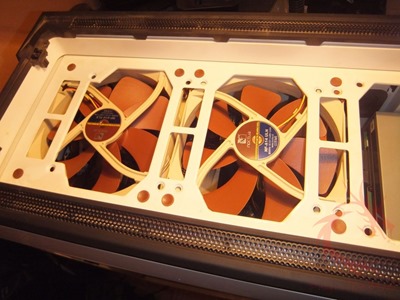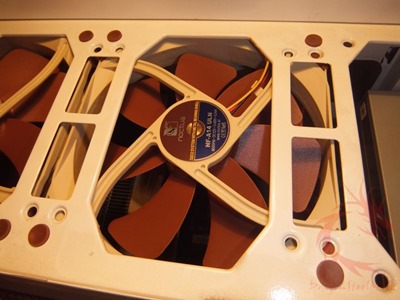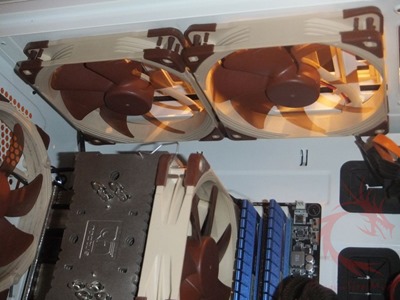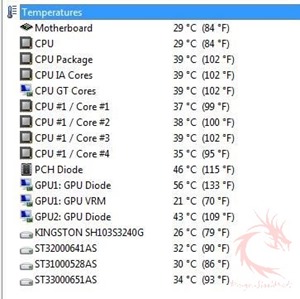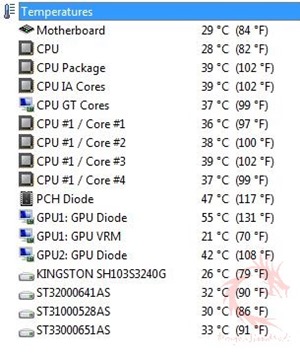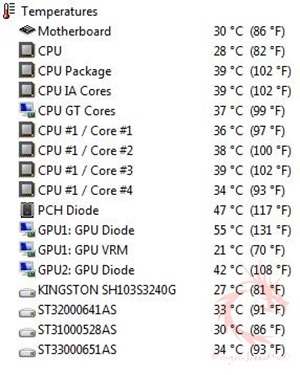Installation and Testing
So like the last fan I installed it in my NZXT Switch 810 case, at the top right next to the other NF-A14 fan, the FLX.
I used the silicone vibration dampening bolts to secure the fan in my case, which were kind of difficult to get installed, but it’s not their fault as it’s just rather tight to work between the two fans.
Here’s the view from inside of the my case of the two Noctua 140mm fans, the one on the right is the NF-A14 ULN:
The first thing you’ll notice when you power on your system is the silence, this fan runs at only 800RPM normally, yes that’s slow but it’s very quiet, and I think that’s the point. It runs slow but thanks to Noctua’s engineering team design, the fan will still move quite a bit of air making sure things stay cool. Noctua also included a Low Noise Adapter which slows the fan down even more to only 650RPM.
Like the last 140mm fan review I used Aida64 to monitor system temperatures. The ambient temperature was 24.5C (+/- .3c).
Originally I had two Noctua 120mm fans in the case and here’s those temps:
Then here’s the temps I got after I installed the NF-A14 ULN fan (the NF-A14 FLX was also installed, so it was two 140mm fans in the case).
This is without the adapter in use, just plugged in and running basically.
There’s a slight difference in temperatures, we can see a few of them dropped about 1 degree, which isn’t bad considering the fan only runs at 800RPM.
Then I used the Low Noise Adapter to slow the NF-A14 ULN down to 650RPM.
The temperatures pretty much stayed the same using the adapter and honestly I wasn’t expecting much. The idea is to lower the noise level but yet still move the same amount of air and it seems to work.
One small thing that bugs me about these fans that I don’t think I mentioned in the last review is the fact that the silicone corner pieces come off fairly easy. I knocked one off during installation and didn’t even realize it until later, and it took me quite a while to find it. I guess it’s good that they come off easily as then you can remove them if you want, but you can very easily knock them off too.

